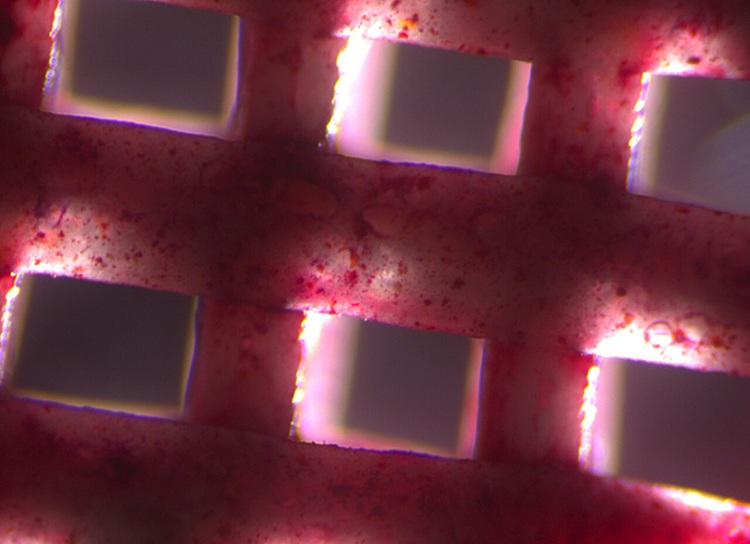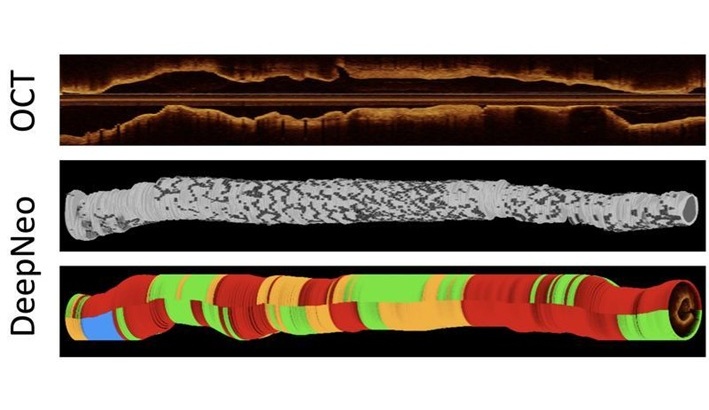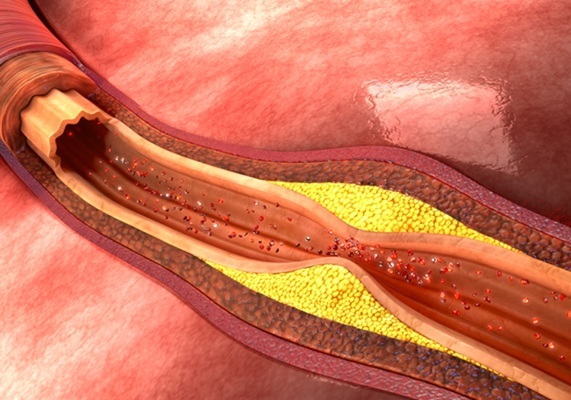Novel 3D Printed Scaffolds Ensure Better Healing and Regeneration of Bone Tissue
|
By HospiMedica International staff writers Posted on 23 Dec 2024 |

Critical bone defects caused by trauma, tumor removal, or congenital conditions pose significant treatment challenges due to the high likelihood of graft failure, often resulting from poor blood supply. To address this problem, researchers have developed innovative 3D-printed scaffolds made from polylactic acid and calcium phosphate, which help promote blood vessel formation, improving the healing and regeneration of bone tissue.
Bone is a highly vascularized tissue, and the connection between angiogenesis, or the formation of blood vessels, and bone healing has long been recognized. Several studies have shown that impaired bone healing can occur when angiogenesis is lacking or insufficient. Traditional treatment methods, such as grafting, often lead to complications due to the inability of the implant to integrate properly, as they suffer from inadequate blood supply, resulting in necrosis. To solve this issue, researchers at the Institute for Bioengineering of Catalonia (IBEC, Barcelona, Spain) have utilized 3D bioprinting to create polylactic acid and calcium phosphate-based glass scaffolds that support angiogenesis and the maturation of blood vessels. Bone tissue is composed of both a non-mineralized organic component (primarily collagen) and a mineralized inorganic part (mainly hydroxyapatite). The researchers' approach involved using calcium phosphate (CaP) glass scaffolds to enhance the properties of polylactic acid (PLA), thereby producing a material that meets the chemical, mechanical, and biological requirements for bone tissue.
The new PLA-CaP scaffolds support adequate vascularization, which not only aids in tissue healing but also promotes efficient bone regeneration, potentially reducing or eliminating bone scarring. To build these scaffolds, the researchers employed 3D printing, allowing for precise control over scaffold geometry, porosity, and surface characteristics. In vitro tests revealed that the 3D-printed scaffolds supported the proliferation of human mesenchymal stem cells and stimulated the secretion of vascular endothelial growth factor (VEGF), a key protein that promotes blood vessel formation. Additionally, the scaffolds maintained calcium ion release at physiological levels, which is essential for vascularization. In vivo testing using a subcutaneous mouse model also yielded promising results. Within just one week of implantation, the scaffolds showed good integration with significant blood vessel infiltration.
The PLA-CaP scaffolds proved particularly effective, with increased vessel maturation observed after four weeks and no signs of vascular regression. Analysis of the blood vessels showed that the vessel walls, initially thin, thickened and stabilized over time, demonstrating that the scaffolds not only support initial blood vessel growth but also provide a favorable environment for long-term vascularization—an essential factor for successful bone regeneration. This advanced scaffold development highlights the synergistic benefits of combining 3D printing technology with bioactive materials like calcium-releasing particles. The architecture of the PLA-CaP scaffolds enhances both vascularization and osteogenesis, opening the door for more effective bone healing strategies and potentially reducing graft failure rates.
“We believe that our 3D printed scaffolds could revolutionize the way we approach bone regeneration,” said Celia Ximenes-Carballo, first author of the study. “By enhancing vascularization, we can significantly improve healing outcomes and reduce the chances of complications associated with traditional grafting methods.”
Related Links:
IBEC
Latest Surgical Techniques News
- DNA Origami Improves Imaging of Dense Pancreatic Tissue for Cancer Detection and Treatment
- Pioneering Sutureless Coronary Bypass Technology to Eliminate Open-Chest Procedures
- Intravascular Imaging for Guiding Stent Implantation Ensures Safer Stenting Procedures
- World's First AI Surgical Guidance Platform Allows Surgeons to Measure Success in Real-Time
- AI-Generated Synthetic Scarred Hearts Aid Atrial Fibrillation Treatment
- New Class of Bioadhesives to Connect Human Tissues to Long-Term Medical Implants
- New Transcatheter Valve Found Safe and Effective for Treating Aortic Regurgitation
- Minimally Invasive Valve Repair Reduces Hospitalizations in Severe Tricuspid Regurgitation Patients
- Tiny Robotic Tools Powered by Magnetic Fields to Enable Minimally Invasive Brain Surgery
- Magnetic Tweezers Make Robotic Surgery Safer and More Precise
- AI-Powered Surgical Planning Tool Improves Pre-Op Planning
- Novel Sensing System Restores Missing Sense of Touch in Minimally Invasive Surgery
- Headset-Based AR Navigation System Improves EVD Placement
- Higher Electrode Density Improves Epilepsy Surgery by Pinpointing Where Seizures Begin
- Open-Source Tool Optimizes Placement of Visual Brain Implants
- Easy-To-Apply Gel Could Prevent Formation of Post-Surgical Abdominal Adhesions
Channels
Critical Care
view channel
AI Model Analyzes Patient Data to Diagnose Multiple Sclerosis With 90% Accuracy
Multiple sclerosis (MS) is a chronic inflammatory condition affecting the central nervous system. Most patients initially experience the relapsing-remitting form (RRMS), characterized by periods of symptom... Read more
Magnetically Navigable Microparticles Enable Targeted Drug Delivery
Abdominal aortic aneurysms (AAA) can be life-threatening if not treated and result in nearly 10,000 deaths annually. Researchers working to improve treatments for AAA could now make it possible for doctors... Read more
AI-Powered Algorithm Automates Analysis of Coronary Stents After Implantation
Every year, over three million people globally receive stents to open blocked blood vessels caused by heart disease. However, monitoring the healing process after stent implantation remains a significant challenge.... Read morePatient Care
view channel
Portable Biosensor Platform to Reduce Hospital-Acquired Infections
Approximately 4 million patients in the European Union acquire healthcare-associated infections (HAIs) or nosocomial infections each year, with around 37,000 deaths directly resulting from these infections,... Read moreFirst-Of-Its-Kind Portable Germicidal Light Technology Disinfects High-Touch Clinical Surfaces in Seconds
Reducing healthcare-acquired infections (HAIs) remains a pressing issue within global healthcare systems. In the United States alone, 1.7 million patients contract HAIs annually, leading to approximately... Read more
Surgical Capacity Optimization Solution Helps Hospitals Boost OR Utilization
An innovative solution has the capability to transform surgical capacity utilization by targeting the root cause of surgical block time inefficiencies. Fujitsu Limited’s (Tokyo, Japan) Surgical Capacity... Read more
Game-Changing Innovation in Surgical Instrument Sterilization Significantly Improves OR Throughput
A groundbreaking innovation enables hospitals to significantly improve instrument processing time and throughput in operating rooms (ORs) and sterile processing departments. Turbett Surgical, Inc.... Read moreHealth IT
view channel
Printable Molecule-Selective Nanoparticles Enable Mass Production of Wearable Biosensors
The future of medicine is likely to focus on the personalization of healthcare—understanding exactly what an individual requires and delivering the appropriate combination of nutrients, metabolites, and... Read more
Smartwatches Could Detect Congestive Heart Failure
Diagnosing congestive heart failure (CHF) typically requires expensive and time-consuming imaging techniques like echocardiography, also known as cardiac ultrasound. Previously, detecting CHF by analyzing... Read moreBusiness
view channel
Expanded Collaboration to Transform OR Technology Through AI and Automation
The expansion of an existing collaboration between three leading companies aims to develop artificial intelligence (AI)-driven solutions for smart operating rooms with sophisticated monitoring and automation.... Read more
















